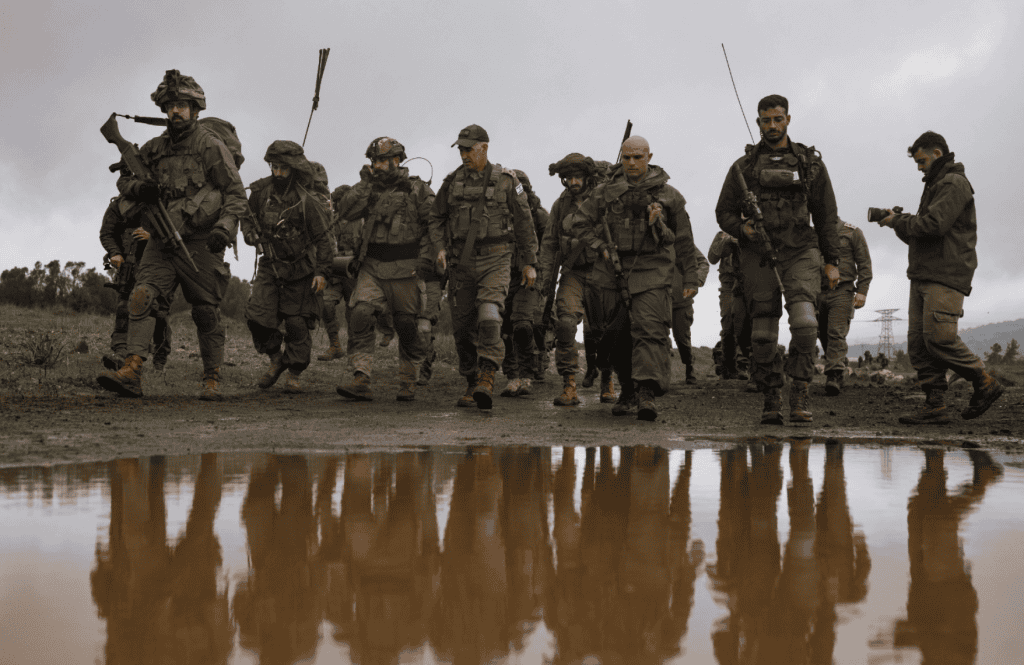
Israel Chief of Staff Herzi HaLevi met with IDF troops in northern Israel on January 17 and discussed the prospect of a wider conflict with Hezbollah. “I don’t know when the war in the north [may occur]. I can tell you that the likelihood of it happening in the coming months is much higher than it was in the past,” he said on January 17. The comments came as Israel carried out airstrikes against terrorist cells in the West Bank and as a key IDF division was withdrawn from Gaza
The 36th division of the IDF is known as the “rage” division, and it includes Golani infantry, the 7th armored and 188th armored brigades, and the 282nd artillery unit. The division is ending its deployment in Gaza, according to reports on January 15. Elements of the division, such as the tanks of the 7th armored may continue to operate in Khan Yunis. However, the overall trend is that a number of key units have been moved out of Gaza in the last month as Israel shifts to a low intensity conflict in Gaza.
The shifting of forces is not unique to Israel’s armed conflict with Hamas. Units are often rotated in and out of conflicts or deployments. However, it is not clear if the units being withdrawn from Gaza are being shifted because other units are filling their role or because the overall trend is a major reduction in forces. Currently, it appears to be the latter. Nevertheless, operations continue in Gaza. The IDF said on January 16 that its commando forces continued to dismantle terrorist infrastructure in Khan Yunis and carried out another precision airdrop to units therein. Confirming that units can be resupplied by air is an important test for the Israeli resupply system.
Meanwhile in central Gaza’s Bureij area, an IDF unit found rocket launchers that were used to fire a barrage of 25 rockets towards the Israeli city of Netivot on January 16. On January 17, the same IDF unit — the 646th brigade — along with combat engineers, dismantled a Hamas tunnel complex underneath the important Salah al-Din road which connects Gaza City to Khan Yunis. This route was used as a humanitarian corridor in November for civilians fleeing from Gaza City to the south. The tunnel system would have enabled Hamas to shift forces, or even hostages, from the north to south.
In northern Israel, troops continued to prepare for possible escalation. On January 16, the 282nd brigade conducted an exercise for a possible “offensive in Lebanon, as part of the enhancement of the troops’ preparedness,” the IDF said. “This exercise we’re in and heading out to is important for the enhancement of our preparedness, extending our operations, and for an offensive against Lebanon. We’re more prepared for this than ever before, even for tonight if needed, and we’ll continue and strengthen our preparations and our readiness moving forward,” Maj. Ori Gordin, the commanding officer of Israel’s Northern Command said. The IDF released a video of the speech. HaLevi met Gordin on January 17, along with other key commanders in the north.
The focus on the north comes as Israel also carried out raids in the West Bank. In Balata, a neighborhood in the city of Nablus, a terrorist cell was targeted in an air strike. In addition, a drone was used in Tulkarm to strike another group of terrorists. The two airstrikes in the West Bank are unusual, given that the IDF doesn’t usually use airstrikes there. However, increased activity from groups such as Palestinian Islamic Jihad have led Israel to be more aggressive in its campaigns. Israel is also utilizing new tools, including combat helicopters, new loitering munitions and airstrikes by drones such as the Zik or Hermes 450.
Together, the operations in the West Bank and HaLevi’s focus on training in the north illustrate how Israel appears to be shifting focus from Gaza to other fronts. This took place as the Iran-backed Houthis continue to attack shipping and after Iran carried out an attack on northern Iraq in which Iran claimed it was targeting Israeli “spy” centers.







